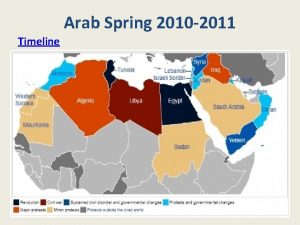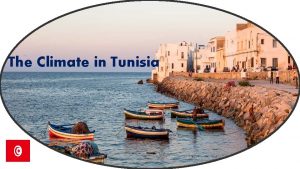The Climate in Tunisia In Tunisia the climate











- Slides: 11

The Climate in Tunisia


In Tunisia the climate is Mediterranean (with mild, rainy winters and hot, sunny and dry summers) on the northern Coast it is semi-desert to desert in inland areas. The east coast, from the Gulf of Hammamet towards the south, receives little rainfall, and going towards the south becomes even less rainy, until it becomes desert in the southern most part (from the Gulf of Gabès to the border with Libya)

39 -42 °C (88/90°F) 14 -15 °C (61/64°F) Precipitation decreases to 300/400 mm (12/16 in) per year in the Gulf of Hammamet, and to about 200 mm (8 in) in the Gulf of Gabès.


In the northwest, there are hilly and mountainous areas which in winter can be cold and may even experience snowfalls, while in summer they are hot during the day, but remain quite cool at night.

In the desert, the temperature range is wider than on the coast, so that in winter, night-time temperatures can drop a few degrees below freezing 0 °C , while in summer the highest recorded temperatures are remarkable: about 45 °C in the southern part of the desert.

The rains in the desert region are scarce throughout the year, but they are even scarcer in summer, when only very few showers occur. In the desert area, there is also a large salt lake, Chott el-Jerid, almost entirely dry, witness of a past when the climate was more humid. The few remaining waterholes have different colours, depending on the salt that prevails in each of them, offering an unusual view.

Desert effect: Coastal and mountainous regions of Tunisia may be affected by the desert wind, which causes an increase in temperature by several degrees, but also a drop in relative humidity, and may also bring sandstorms. During these periods it can be hot, especially from June to September, when the temperature can exceed 40 °C (104 °F) in Tunis and along the east coast.

The amount of sunshine in Tunisia is very good throughout the year on the east and south coast and in inland areas, while on the northern coast, from October to April there's no shortage of sunny days. * In the northern part of the coast, the sea is warm enough for swimming from July to September, while it is definitely cool, if not cold, from December to May. In the southern part of the coast, the trend is similar, although the sea is slightly warmer, and it's still warm until October.

Thanks for your attention





















